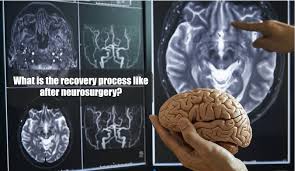The human brain is one of the most intricate and delicate organs in the body, making brain surgery a highly complex and risky field. Surgeons must often make critical decisions within seconds during procedures that can last hours. In this high-pressure environment, Artificial Intelligence (AI) is emerging as a transformative force—enhancing real-time decision making and improving surgical precision, safety, and outcomes.
The High-Stakes Nature of Brain Surgery
Neurosurgical procedures demand extraordinary precision. Even a millimeter of deviation can result in significant neurological damage. Surgeons are often faced with:
- Incomplete data during surgery
- Unexpected anatomical variations
- Time-sensitive decisions that impact patient survival and recovery
This is where AI steps in as a powerful assistant.
How AI Enhances Real-Time Decision Making in Brain Surgery
1. AI-Powered Imaging and Visualization
AI algorithms integrate with intraoperative imaging tools (e.g., MRI, CT, ultrasound) to provide:
- Real-time 3D visualizations of the brain
- Precise tumor or lesion localization
- Dynamic updates as the surgery progresses
This helps surgeons continuously adapt their strategy during the operation.
2. Augmented Reality and Image-Guided Navigation
AI enhances augmented reality (AR) platforms that project critical brain structures directly into the surgeon’s view. These systems assist with:
- Mapping out safe surgical paths
- Avoiding vital brain regions (like motor or speech centers)
- Reducing guesswork during complex maneuvers
3. Smart Surgical Robots
AI-enabled robotic systems work in sync with surgeons to:
- Stabilize hand movements
- Perform repetitive or delicate tasks with microscopic precision
- Analyze intraoperative conditions to adjust tool paths in real time
The result is greater control and reduced human error.
4. Predictive Analytics and Decision Support
AI tools can rapidly process intraoperative data such as blood flow, oxygen levels, and brain activity. They offer real-time alerts and suggestions, enabling:
- Immediate response to complications
- Informed choices about continuing or modifying the procedure
- Early identification of post-operative risks
5. Automated Workflow Integration
AI can optimize workflow during surgery by:
- Coordinating with anesthesia and monitoring systems
- Managing instrument usage and inventory in real time
- Documenting surgical actions for post-op analysis
Key Benefits of AI in Intraoperative Decision-Making
- Increased Surgical Accuracy: Enhanced visualization and robotic assistance reduce the margin of error.
- Faster Decisions: Instant analysis of data enables quicker and more informed surgical choices.
- Improved Outcomes: Reduced complication rates, faster recovery times, and higher patient satisfaction.
- Surgeon Support: AI acts as a second brain, supporting even the most experienced neurosurgeons in high-stress moments.
Real-World Applications and Case Studies
Several hospitals and research centers globally are already integrating AI into brain surgery. Examples include:
- AI-assisted glioma resection using real-time imaging feedback
- Deep learning models that classify brain tumors during surgery
- Robotic-assisted DBS (Deep Brain Stimulation) surgeries for Parkinson’s patients
Challenges and Considerations
Despite the promise, AI integration in brain surgery faces some obstacles:
- Data Quality: AI models require large, high-quality datasets for training.
- Clinical Trust: Surgeons must balance AI insights with their clinical judgment.
- Cost and Implementation: Advanced AI systems are expensive and require specialized infrastructure.
The Future of AI in Neurosurgery
The future of brain surgery is one where AI and human expertise co-exist seamlessly. Advancements we can expect include:
- Fully integrated AI dashboards in operating rooms
- More autonomous robotic surgery with real-time adaptive capabilities
- AI-driven simulation models for pre-surgical planning and practice
Conclusion
Artificial Intelligence is revolutionizing brain surgery by enhancing real-time decision making. It empowers neurosurgeons with timely insights, precision tools, and smart assistance—transforming how surgeries are planned and executed. As technology continues to evolve, AI will play an increasingly vital role in making brain surgery safer, smarter, and more successful.
Would you like this article tailored for a medical journal, patient education blog, or conference presentation format?
Also Read :
